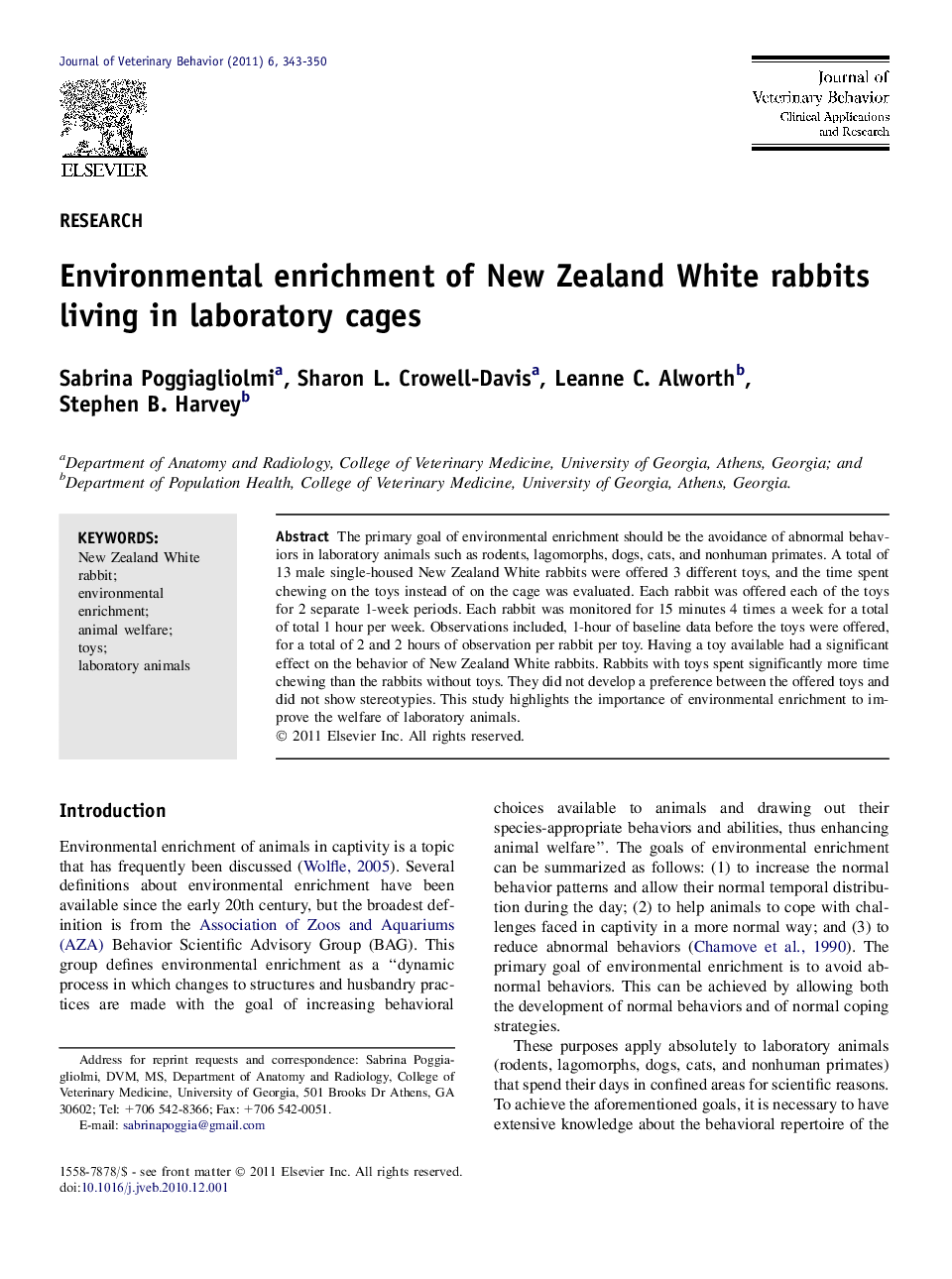| Article ID | Journal | Published Year | Pages | File Type |
|---|---|---|---|---|
| 2399234 | Journal of Veterinary Behavior: Clinical Applications and Research | 2011 | 8 Pages |
Abstract
The primary goal of environmental enrichment should be the avoidance of abnormal behaviors in laboratory animals such as rodents, lagomorphs, dogs, cats, and nonhuman primates. A total of 13 male single-housed New Zealand White rabbits were offered 3 different toys, and the time spent chewing on the toys instead of on the cage was evaluated. Each rabbit was offered each of the toys for 2 separate 1-week periods. Each rabbit was monitored for 15 minutes 4 times a week for a total of total 1 hour per week. Observations included, 1-hour of baseline data before the toys were offered, for a total of 2 and 2 hours of observation per rabbit per toy. Having a toy available had a significant effect on the behavior of New Zealand White rabbits. Rabbits with toys spent significantly more time chewing than the rabbits without toys. They did not develop a preference between the offered toys and did not show stereotypies. This study highlights the importance of environmental enrichment to improve the welfare of laboratory animals.
Related Topics
Life Sciences
Agricultural and Biological Sciences
Animal Science and Zoology
Authors
Sabrina Poggiagliolmi, Sharon L. Crowell-Davis, Leanne C. Alworth, Stephen B. Harvey,
